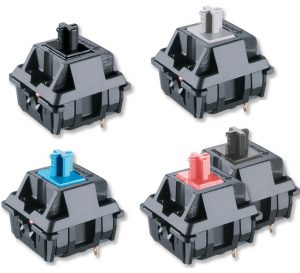Understanding the Capability of Membrane Layer Changes for Customer User Interface Gadget
The performance of membrane layer switches stands for a substantial improvement in user interface style, combining effectiveness with visual versatility. As markets significantly focus on user experience, comprehending the subtleties of membrane switch modern technology comes to be crucial.
What Are Membrane Switches?
Membrane switches are innovative interface devices that assist in customer communication with digital tools. These versatile components include multiple layers, consisting of a graphic overlay, spacer, and a published circuit layer. The layout permits a smooth integration right into different electronic gadgets, improving both the visual and useful aspects of user interfaces.
Membrane buttons are generally used in a vast array of applications, from home home appliances to industrial machinery and clinical tools. Their building and construction typically features a thin account, making them an ideal selection for portable styles. The tactile feedback provided by these switches can be crafted to satisfy particular user preferences, ensuring reliable interaction in between the individual and the device.
Sturdiness is another significant advantage of membrane switches, as they are resistant to dust, moisture, and chemicals, which enhances their life expectancy popular atmospheres. In addition, these buttons can be tailored in regards to shape, dimension, and visuals design, permitting branding and user-specific features. Overall, membrane switches over stand for a functional service for boosting individual experience in digital gadgets, incorporating performance with visual charm in an effective way.
Exactly How Membrane Changes Job
Operating on an uncomplicated principle, membrane switches make use of a split building and construction to register user input successfully. Each switch includes multiple layers, consisting of a published circuit layer, a spacer layer, and a top visuals layer, which are made to interact perfectly. When a customer presses the top layer, it compresses the spacer layer, bringing the conductive components of the circuit layer into contact with each various other.
This contact produces a shut circuit, signaling the gadget to implement a specific feature. The layout enables numerous setups, consisting of tactile feedback, which can improve the user experience by offering a physical experience upon activation. The products made use of in membrane switches commonly consist of flexible substrates, such as polyester or polycarbonate, which ensure toughness and strength against deterioration.

Key Benefits of Membrane Layer Switches

Another substantial benefit is their compactness. Membrane This Site layer switches are thin and light-weight, which allows manufacturers to conserve area in their gadgets without sacrificing performance. This attribute is especially useful in applications where weight and quantity are important considerations.
In addition, membrane buttons are immune to dust, moisture, and chemicals, improving their sturdiness. This resilience extends their lifespan and lowers the need for regular replacements, causing price savings over time.
In addition, the tactile feedback provided by membrane layer switches can be enhanced to boost user interaction. They can include attributes such as raised switches or distinct clicks, improving functionality and customer experience.
Applications Across Industries
Interface tools utilizing membrane buttons are widespread in a broad variety of sectors, showcasing their adaptability and functionality. Membrane Switch. In the medical market, membrane layer buttons are integral to gadgets such as analysis tools and individual surveillance systems, where their sturdiness and ease of cleansing are crucial for preserving hygiene requirements. Similarly, in the automobile sector, these switches are employed in control panel try this web-site controls and infomercial systems, providing a smooth and modern interface for users.
Furthermore, the consumer electronics industry advantages from membrane switches in appliances and handheld tools, where portable layout and straightforward user interfaces boost individual experience. Industrial applications likewise take advantage of membrane switches for control board in equipment and automation systems, stressing their effectiveness and resistance to rough settings.
In the aerospace and protection industries, membrane buttons are used in cockpit controls and tools, where reliability and efficiency under extreme conditions are paramount. In addition, the pc gaming market increasingly incorporates membrane layer buttons in controllers and arcade machines, adding to an appealing user experience. On the whole, the convenience of membrane layer changes allows their extensive use throughout various sectors, emphasizing their importance in contemporary interface design.
Future Fads in Membrane Switch Over Innovation

In addition, making use of sophisticated products, such as polycarbonate and polyester movies, is anticipated to rise, providing improved longevity and resistance to environmental stressors. These materials add to the general long life of membrane layer switches, making them appropriate for harsher commercial applications.
Moreover, the incorporation of wise innovation, consisting of IoT connection, will certainly make it possible for membrane layer buttons to communicate with other devices and systems, helping with a more interactive individual experience. This pattern lines up with the growing demand for wise gadgets across different industries, from health care to consumer electronics.
Finally, personalization options check it out are prepared for to increase, allowing makers to produce bespoke options customized to details individual needs and preferences. These growths will position membrane switches as vital elements in the development of interface technology.
Verdict
Finally, membrane layer switches represent a pivotal advancement in customer interface innovation, providing a trustworthy and flexible solution for varied digital applications. Their layered construction promotes small design, while attributes such as tactile responses improve customer communication. The durability against ecological factors better solidifies their energy throughout several industries. As innovations in material scientific research and touch noticing modern technologies continue, the capability and applicability of membrane buttons are anticipated to expand, strengthening their significance in contemporary digital gadgets.